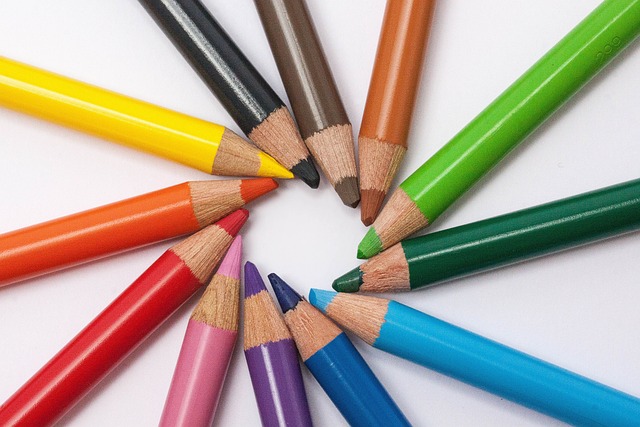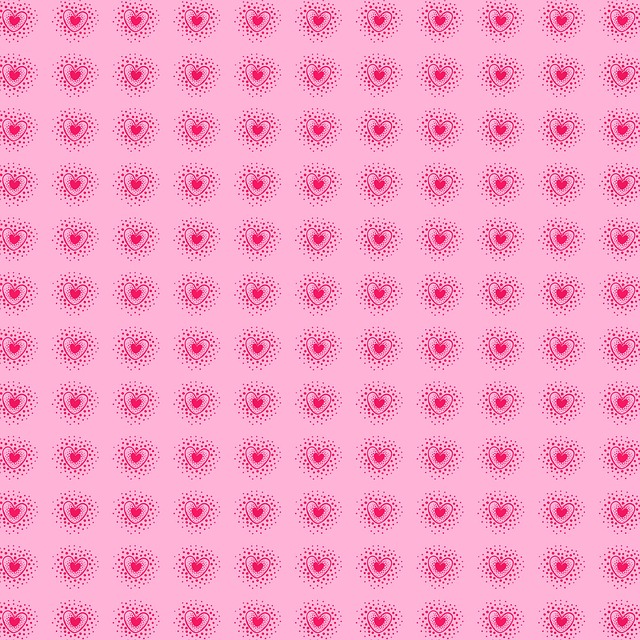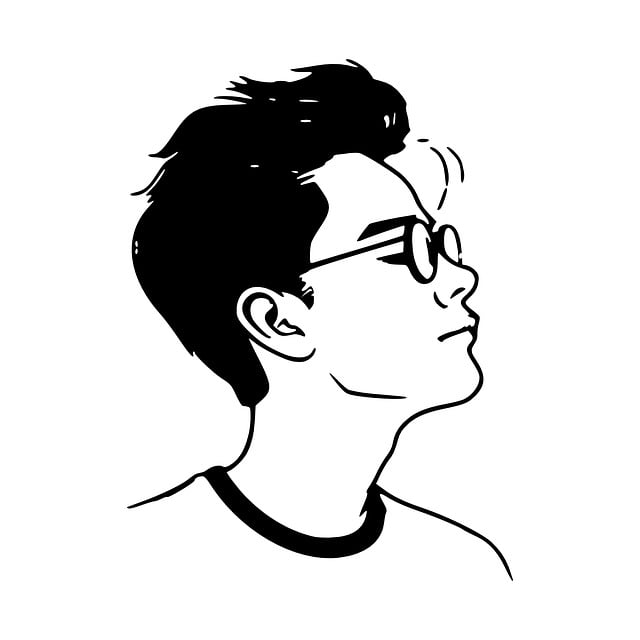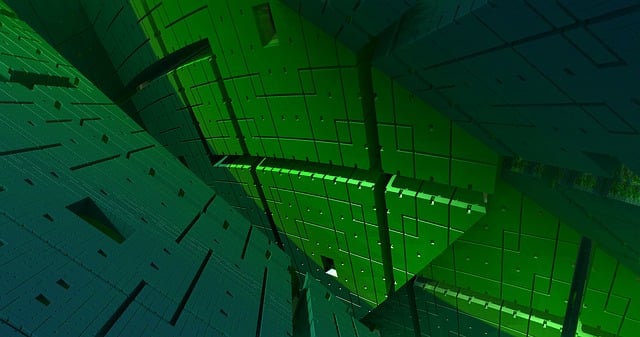Graphic design has undergone a dramatic evolution from traditional manual methods to the digital age. Now, designers leverage computers and software for unprecedented speed, flexibility, and creative freedom, leading to faster experimentation, easier image manipulation, and collaborative project work. Tools like Adobe Photoshop, Illustrator, and InDesign, along with open-source alternatives and AI-driven software, have democratized creativity and encouraged exploration. The digital transformation has led to immersive experiences powered by VR/AR and a growing focus on sustainability in the industry. This fusion of technology and artistic vision promises dynamic, responsible designs globally.
“Explore the dynamic world of Digital Art and Design, where traditional creativity meets cutting-edge technology. This article takes you on a comprehensive journey through the evolution of graphic design, from its roots in manual crafts to the digital revolution. We’ll uncover the tools and software shaping modern visual communication, examine the creative process behind captivating artwork, and delve into the industry’s benefits and challenges. Additionally, we’ll peek into future trends poised to transform graphic design, ensuring you stay ahead in this ever-evolving landscape.”
Evolution of Graphic Design: From Traditional to Digital

The evolution of graphic design has witnessed a remarkable transformation from traditional methods to the digital realm. In the past, designers relied on physical tools such as pens, pencils, and paint to create visual art and layouts. This process was often time-consuming and required meticulous attention to detail. With the advent of digital technology, Graphic Design has undergone a revolution. Computers, software applications, and digital tools have enabled designers to explore new creative horizons with unprecedented efficiency and flexibility.
The shift from traditional to digital graphic design offers numerous advantages. Designers can now experiment with various styles, quickly edit and manipulate images, and easily collaborate on projects. Digital platforms provide an extensive array of fonts, color palettes, and graphics, allowing for more diverse and visually appealing creations. This evolution has not only sped up the design process but also made it more accessible to a broader range of creatives.
Tools and Software for Digital Art and Design

The world of digital art and design offers a vast array of tools and software that have transformed creative processes. From vector graphics to photo editing, programs like Adobe Photoshop, Illustrator, and InDesign dominate the Graphic Design industry, providing artists and designers with powerful features for creating visually stunning content. These applications offer a wide range of functions, from intricate illustration and layout design to complex image manipulation and 3D modeling.
Beyond the industry standards, emerging tools and platforms are constantly evolving, pushing the boundaries of what’s possible in digital art. Open-source alternatives and mobile apps cater to diverse user needs, while AI-powered software promises new levels of creativity. This dynamic landscape encourages experimentation and accessibility, allowing anyone with a passion for art and design to explore their creative potential.
The Impact of Digital Design on Modern Visual Communication

In the digital age, graphic design has undergone a profound transformation, with technology playing a pivotal role in shaping modern visual communication. Digital design tools and software have democratized the creative process, enabling designers, artists, and even non-professionals to craft visually stunning content. This shift has led to an explosion of creativity, where traditional boundaries are blurred, and new forms of artistic expression emerge. With access to advanced editing programs, 3D modeling, and virtual reality, designers now have an extensive palette to convey messages and tell stories in innovative ways.
The impact is evident across various industries. Digital art and design have revolutionized advertising, allowing for dynamic and interactive campaigns that capture audiences’ attention. In the world of branding, logo designs and visual identities are no longer static but can be adapted and modified for different mediums and platforms. Furthermore, web and mobile app design have become essential, with clean interfaces and captivating visuals enhancing user experiences. As a result, digital design has become an indispensable tool, ensuring that visual communication is not just aesthetically pleasing but also highly effective in conveying information and engaging audiences.
Creative Process: From Concept to Final Digitized Artwork

The creative process in digital art and design is a captivating journey from initial concept to the final digitized masterpiece. It begins with an artist or designer envisioning their idea, which could range from a simple sketch on paper to a complex digital scenario. This conceptual stage involves brainstorming, mood boards, and perhaps even rough sketches using graphic design software to explore different directions.
Once the concept solidifies, the process transitions into detailed planning. Artists might create wireframes or digital prototypes to map out composition, color schemes, and overall aesthetic. This iterative phase allows for experimentation with various tools and techniques within graphic design software, fine-tuning elements until satisfaction is achieved. The final step involves rendering the artwork, where all the carefully planned elements come together, resulting in a digitally crafted masterpiece ready for presentation or implementation.
Benefits and Challenges in the Digital Art and Design Industry

The digital art and design industry has revolutionized creativity, offering a vast array of benefits that have transformed both artistic expression and professional opportunities. One of the key advantages is accessibility; artists and designers now have the power to create and experiment with cutting-edge tools and software, often available at relatively low costs or even free. This democratization of design enables individuals from diverse backgrounds to contribute to this creative field, fostering innovation and a rich variety of perspectives. Digital platforms also allow for instant global connectivity, enabling collaboration on projects and the exchange of ideas across borders, leading to unique cultural fusions in art and design.
However, navigating this digital landscape comes with its challenges. The constant evolution of technology requires designers to continuously update their skills, ensuring they stay relevant in an industry that thrives on novelty. Copyright issues and the ease of sharing digital content can also present difficulties, as protecting original work becomes more complex. Additionally, while digital art offers immense freedom, it may detract from the tangible nature of traditional art forms, leading to debates about authenticity and the value of physical creativity. Nonetheless, these challenges often spark new solutions and innovations, shaping a dynamic industry where graphic design continues to evolve and captivate audiences worldwide.
Future Trends Shaping Graphic Design

The future of graphic design is brimming with exciting trends that push creative boundaries and embrace new technologies. One prominent trend is the increased use of interactive and immersive experiences, where designers create dynamic digital environments that engage users in novel ways. Virtual Reality (VR) and Augmented Reality (AR) are no longer mere concepts but are becoming integral tools for visual storytelling, offering unparalleled levels of user interaction.
Additionally, sustainability and eco-friendliness are gaining traction within the design community. Designers are exploring sustainable materials and processes, ensuring that their digital creations have a minimal environmental impact. This shift towards eco-conscious practices is not just a trend but a necessary step to make the industry more responsible. As technology evolves, graphic designers will continue to adapt, combining artistic vision with innovative tools to create visually stunning and conceptually rich designs.
